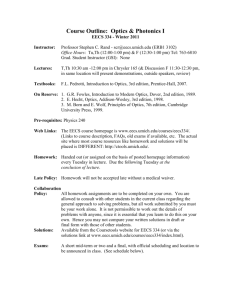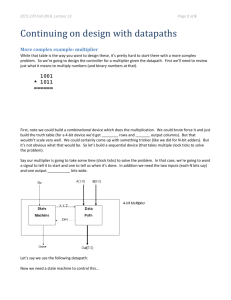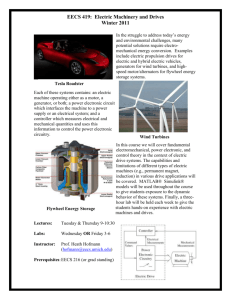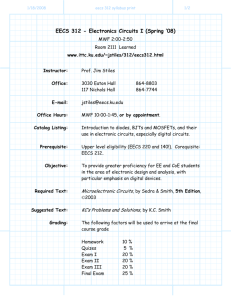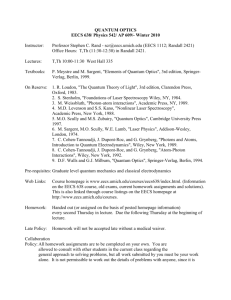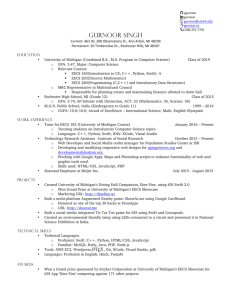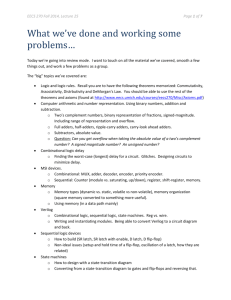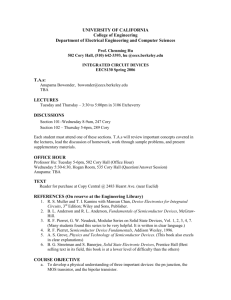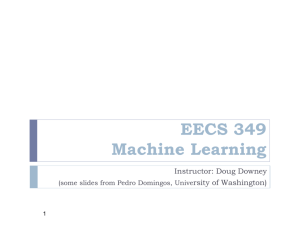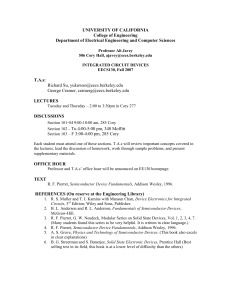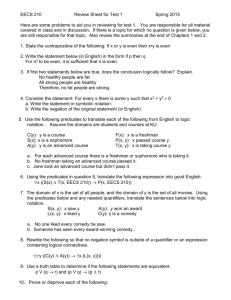Course Outline: Optics & Photonics I EECS 334
advertisement
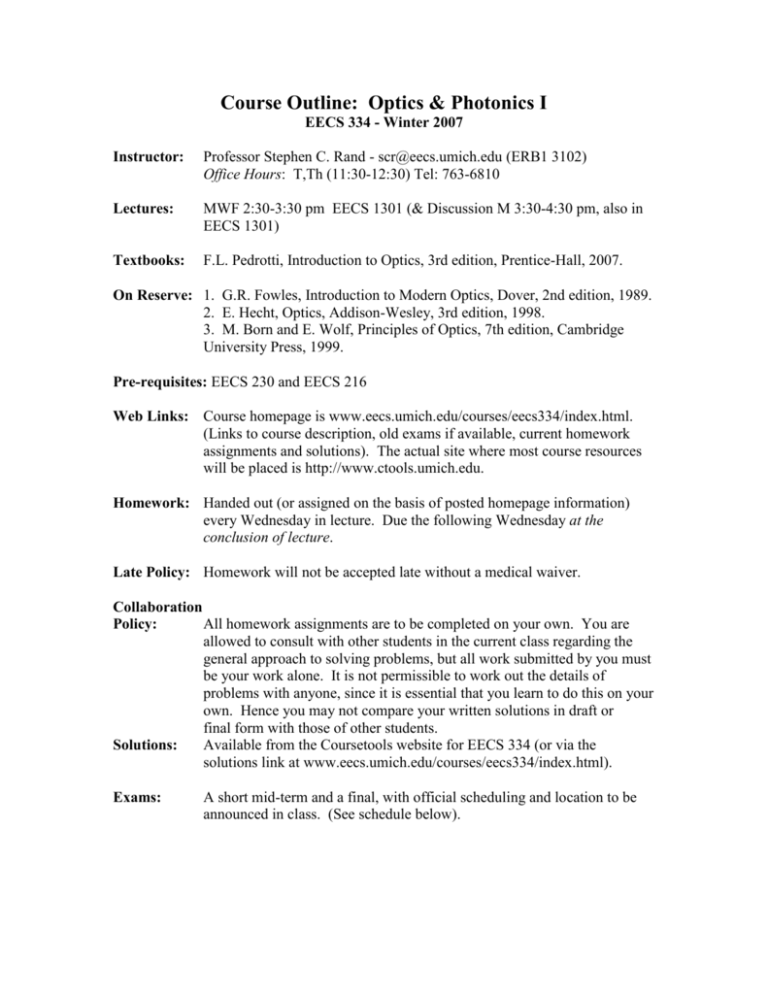
Course Outline: Optics & Photonics I EECS 334 - Winter 2007 Instructor: Professor Stephen C. Rand - scr@eecs.umich.edu (ERB1 3102) Office Hours: T,Th (11:30-12:30) Tel: 763-6810 Lectures: MWF 2:30-3:30 pm EECS 1301 (& Discussion M 3:30-4:30 pm, also in EECS 1301) Textbooks: F.L. Pedrotti, Introduction to Optics, 3rd edition, Prentice-Hall, 2007. On Reserve: 1. G.R. Fowles, Introduction to Modern Optics, Dover, 2nd edition, 1989. 2. E. Hecht, Optics, Addison-Wesley, 3rd edition, 1998. 3. M. Born and E. Wolf, Principles of Optics, 7th edition, Cambridge University Press, 1999. Pre-requisites: EECS 230 and EECS 216 Web Links: Course homepage is www.eecs.umich.edu/courses/eecs334/index.html. (Links to course description, old exams if available, current homework assignments and solutions). The actual site where most course resources will be placed is http://www.ctools.umich.edu. Homework: Handed out (or assigned on the basis of posted homepage information) every Wednesday in lecture. Due the following Wednesday at the conclusion of lecture. Late Policy: Homework will not be accepted late without a medical waiver. Collaboration Policy: All homework assignments are to be completed on your own. You are allowed to consult with other students in the current class regarding the general approach to solving problems, but all work submitted by you must be your work alone. It is not permissible to work out the details of problems with anyone, since it is essential that you learn to do this on your own. Hence you may not compare your written solutions in draft or final form with those of other students. Solutions: Available from the Coursetools website for EECS 334 (or via the solutions link at www.eecs.umich.edu/courses/eecs334/index.html). Exams: A short mid-term and a final, with official scheduling and location to be announced in class. (See schedule below). Grading: Percentage Midterm (Feb.19, 2007, EECS 1301, 2:30-4:30) 25 Homework (~10 weekly problem sets) 40 Final Exam (Apr. 20, 2007,1:30-3:30 pm) 35 100 As a rough grade, letter grades are usually assigned as follows: A>85, A->80, B+>75, B>70, B->65, C+>60, C>55, C->50. Course Outline: No. Lectures 1. The nature of light - waves and photons 2 2. Geometric optics - image formation, magnification, stops, prisms, mirrors, thin lenses, the human eye, fiber waveguides. Blind spot, cactus guides, telescopes, microscopes, cameras. 6 Propagation - Energy, momentum, absorption, and dispersion of light. Demos of prismatic and photo-electric effects, color filters, reflection and refraction at boundaries, total internal reflection, TV rock (optical fibers), quasi-phase conjugation by reflection. Group velocity, wavepackets, bandwidth, ultrashort pulses, slow light. Applications to precision measurements in machines, buildings, geology, the cosmos. 12 Polarization: Fresnel equations, polarizers, birefringence, scattering, optical activity, Faraday rotation. Applications to DNA analysis, photonic devices, displays, quantum cryptography. Demo beamsplitter cube, calcite double refraction (orthogonal eigenmodes), corn syrup 3 3. 4. 5. Interference and coherence: interference with multiple beams, thin films, interferometers. Demo multiple slits, Fabry-Perot, Moire patterns and semi-conductor wafer characterization. Coherence time, coherence length, stellar interferometry. 9 6. Lasers: energy quantization, stimulated emission, and basic principles 3 7. Diffraction - Fraunhofer & Fresnel zones, zone plates, diffraction gratings, resolving power. Demos of 2-D Fourier transforms (various apertures, including variable), holography, optical image processing, focusing with a zone plate, Babinet's Principle with an optical fiber. 4 TOTAL: 39
